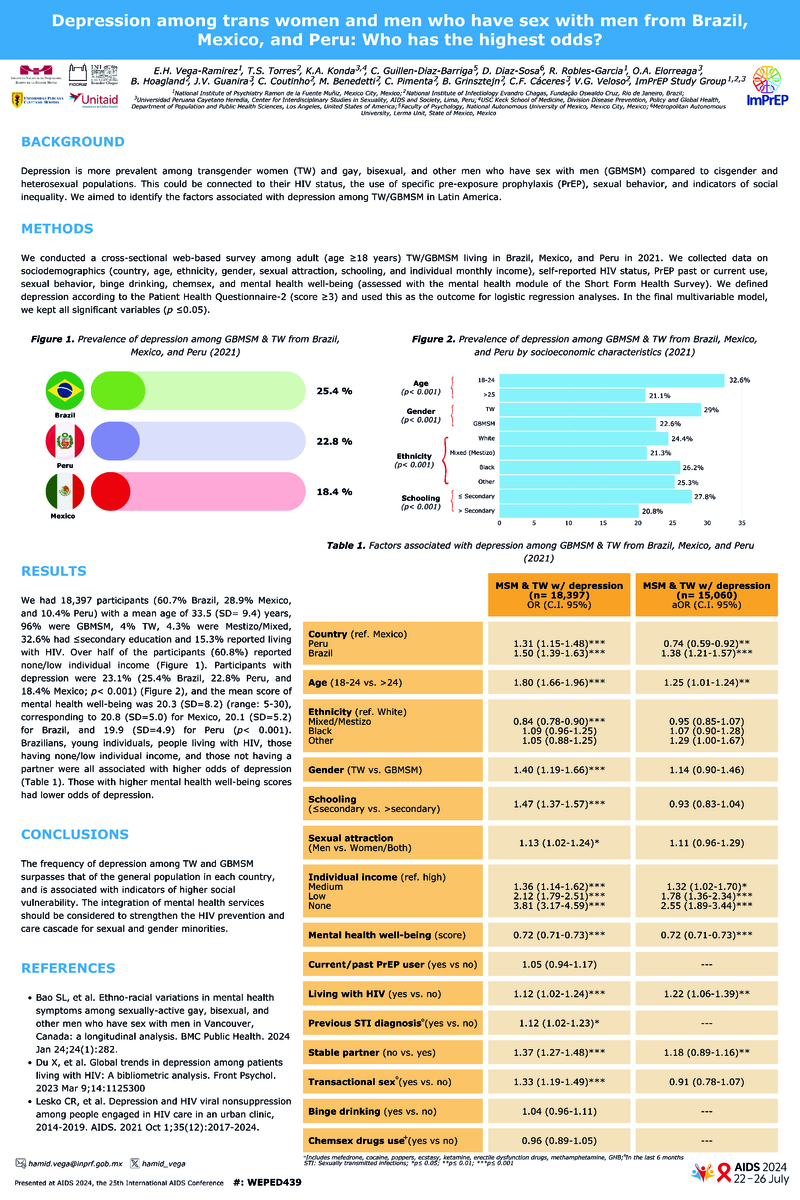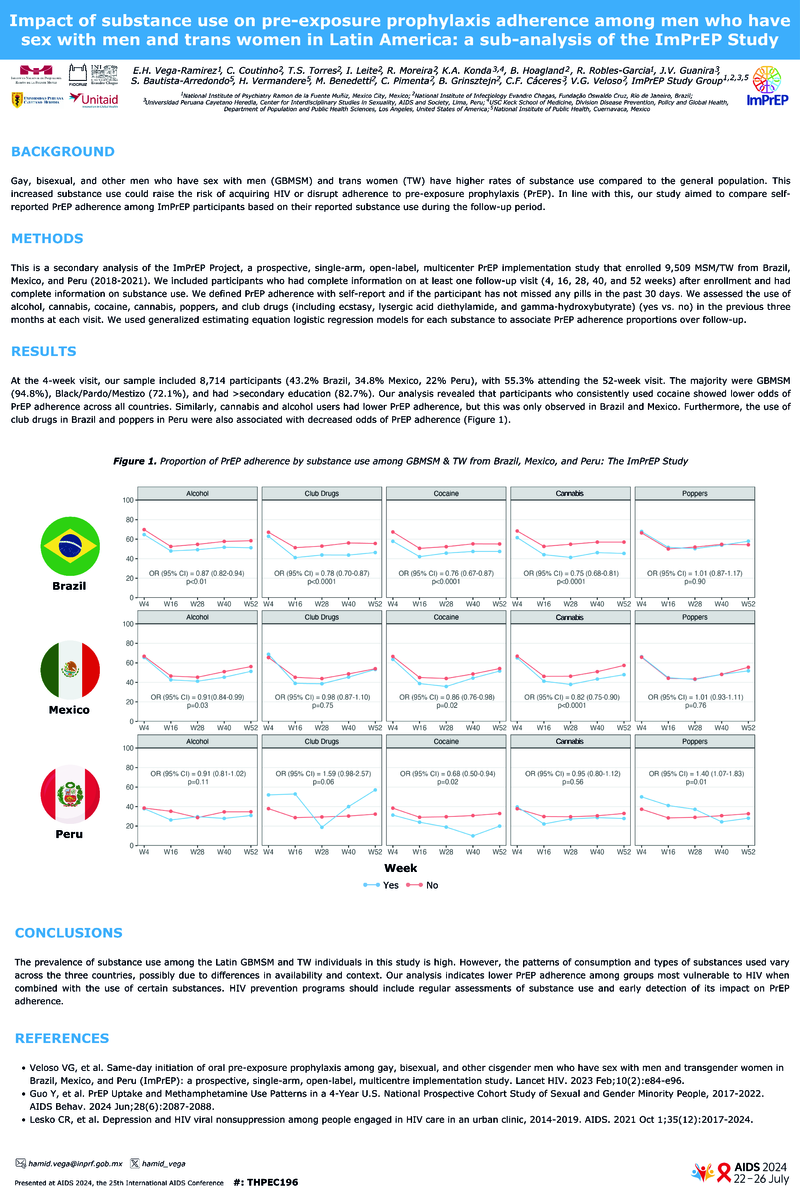Resumen
Background: Accurate estimates of HIV incidence among men who have sex with men (MSM) and transgender women (TW) in Tijuana, Baja California, Mexico are unavailable despite being the most heavily impacted risk populations (HIV prevalence: MSM/TW=20%, persons who inject drugs=4%, female sex workers=6%), with 89% of MSM/TW unaware of their infection. Without HIV incidence data, we cannot evaluate the impact of current interventions. This study estimates and characterizes recent HIV infection among a cohort of newly diagnosed HIV-positive MSM/TW in Tijuana. Methods: Recency was determined using Limiting Antigen (LAg)-Avidity testing (detects infection ~130 days) for the Enlaces cohort of newly-diagnosed HIV-positive MSM/TW (n=195) recruited via venue-based and respondent-driven sampling in Tijuana (03/2015-11/2018). Logistic regression was used to determine characteristics associated with recent infection. We also examined whether recent infections clustered using HIV-1 partial pol sequences generated from blood samples from 141 participants. We used HIV-TRACE to measure TN93 genetic distances between all pairs of sequences and infer putative transmission links between participants whose sequences had genetic distances =1.5%. Clustering was defined as having =1 putative transmission link within the inferred HIV transmission network. Results: Twenty-two (11%) of the 195 participants tested had recent HIV-infections. Of those with sequence data, 64% (9/14) of recent infections clustered, compared with 33% (38/116) of chronic infections. Two recent infections belonged to the same cluster (maximum cluster size:15). In the adjusted analysis, those with recent infection lived in Tijuana longer (OR 1.05; 95% CI 1.01-1.09) and were more likely to use cocaine (past month) (OR 8.57; 95% CI 2.18-33.69). Conclusions: A high proportion of newly diagnosed MSM/TW in Tijuana were recently infected. The low clustering between the recent infections suggests continued onward HIV transmission, rather than a network outbreak. Given the majority of HIV-positive MSM/TW in Tijuana are unaware, this estimate serves as a starting point for resource allocation.






